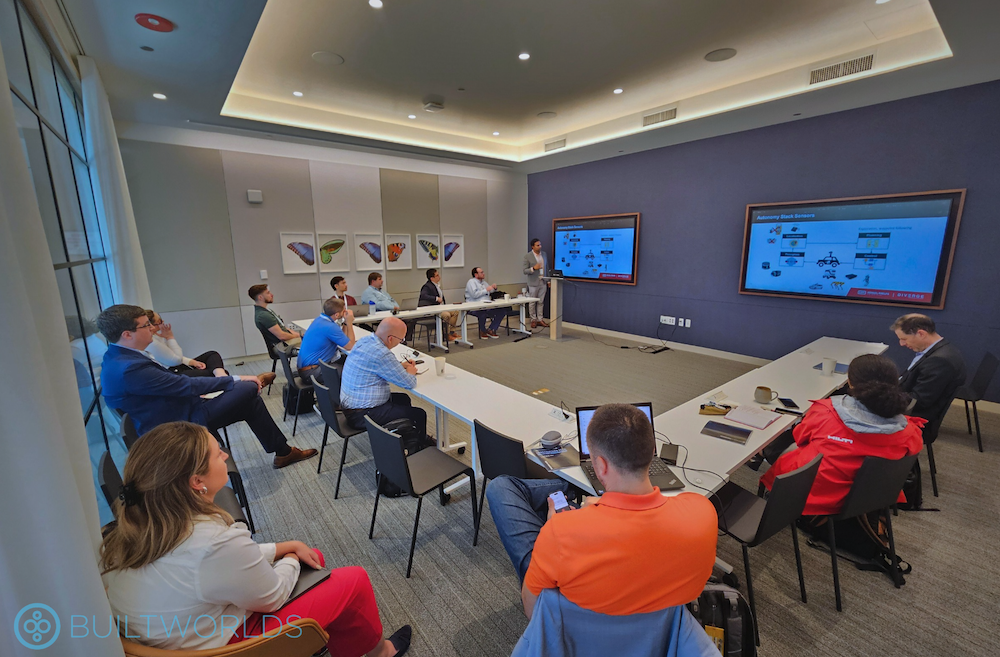
Over the past decade, construction has undergone a significant digital transformation, with software innovations, growing investments, and the emergence of construction tech startups accelerating the shift to more efficient, collaborative, and tech-driven workflows. While software innovations enhance efficiency and decision-making, the physical limitations of outdated equipment and machinery can bottleneck progress, making it essential to advance both in parallel. Construction is inherently reliant on the performance and capabilities of its machines—no amount of data or automation can overcome inefficiencies caused by aging or suboptimal hardware. To truly capitalize on digital transformation, we must ensure that our equipment evolves to match the intelligence and precision offered by modern software solutions.
That’s precisely why BuiltWorlds introduced our Tools, Equipment, and Robotics Research Track earlier this year. Our team has focused on these areas for many years as part of our Construction Tech Research Track. However, by creating a separate track for hardware and related innovations, we can foster more meaningful collaboration and drive significant change.
Members of the Tools, Equipment, and Robotics Forum convened for the first time in person at our Construction Tech Conference in July. I shared some key insights from our related research reports to tee up a discussion led by Mihir Somalwar, innovation lead at Hensel Phelps. Somalwar led the group through an in-depth discussion of construction robotics. During this session, it was clear that most companies present were still exploring the incorporation of robotics, but they were eager to learn more and share their experiences. To me, this was evidence of the BuiltWorlds research forum concept in action. It effectively brings together people across the industry, fostering engaging discussions that broaden our perspectives for everyone’s benefit.


2024 Innovation Trends in Tools, Equipment & Robotics
Robotics excel in two main categories: monitoring robotics and service/labor robotics.
Monitoring robotics involves technologies like layout design and laser scanning, while service and labor robotics focus on areas such as material handling and demolition. According to the BuiltWorlds 2024 Tools, Equipment, and Robotics survey, most respondents who frequently use robotic solutions mentioned that their selections fall into one or both of these categories. Among regular robotics users, the adoption rate for each category is 65%. However, there are still many obstacles to widespread adoption within the industry.
Electric machinery will play a critical role in reducing construction’s carbon footprint
The built environment is responsible for approximately 40% of greenhouse gas emissions. Of this total, 27% is attributed to building operations, while 13% comes from construction and demolition activities. BuiltWorlds’ research identified that the biggest hurdles in adopting alternative fuels throughout the industry are the cost of replacing current machinery and the lack of infrastructure to provide fuel alternatives to sites.
Autonomous and heavy autonomous equipment are primed to enhance efficiency and safety on jobsites
We’ve seen several examples of this so far, with companies like SafeAI and Xpanner emerging in the industry as autonomous enablement solutions that retrofit existing machinery with autonomous and semi-autonomous capabilities.
Advanced fleet management technologies are a prime example of how AI can level up innovations in the construction industry
Many top fleet management solutions now feature AI capabilities that provide real-time data analytics, predictive maintenance, and automated decision-making. These features optimize equipment utilization, reduce downtime, and lower operational costs. Nearly 90% of contractors surveyed in BuiltWorlds’ 2024 Tools, Equipment, and Robotics survey indicated that the value received from their fleet management solution justified the cost.
Robotics and AI are transforming offsite prefabrication
Advanced robotic systems assemble complex parts with precision, while AI tools optimize designs for manufacturability and transport. This combination accelerates production timelines, reduces waste, and ensures higher quality, which is driving the adoption of prefabricated solutions for scalable and sustainable construction. A portion (14%) of contractors engaged in offsite construction practices indicated that their processes are primarily automated, per BuiltWorlds 2024 Offsite Construction survey.
What’s in store for 2025
Based on feedback and conversations since we formally launched the Track at our Construction Tech Conference in July, we plan to cover more topics under this track in our 2025 research and expand our research around autonomous equipment and robotics. Starting next year, the following technology and topic areas will be covered under the rebranded Equipment & Robotics Track:
- Fleet Management & Telematics
- Equipment Fuel Alternatives and Electric Machines
- Equipment & Machinery Marketplace Solutions
- Autonomous & Semi-autonomous Machinery (NEW)
- Prefabrication Automation (NEW)
- Jobsite Robotics (New focus to jobsite robotics as a distinct category)
Throughout the year, we will continue to discuss core topics and trends related to equipment and robotics in the construction industry in forum meetings, both in-person and virtual. Track members will kick off the year in January with a discussion about asset and equipment management. For a full breakdown of next year’s forums and more details about the research track, check out the Equipment & Robotics Research Track homepage.

Discussion
Be the first to leave a comment.
You must be a member of the BuiltWorlds community to join the discussion.